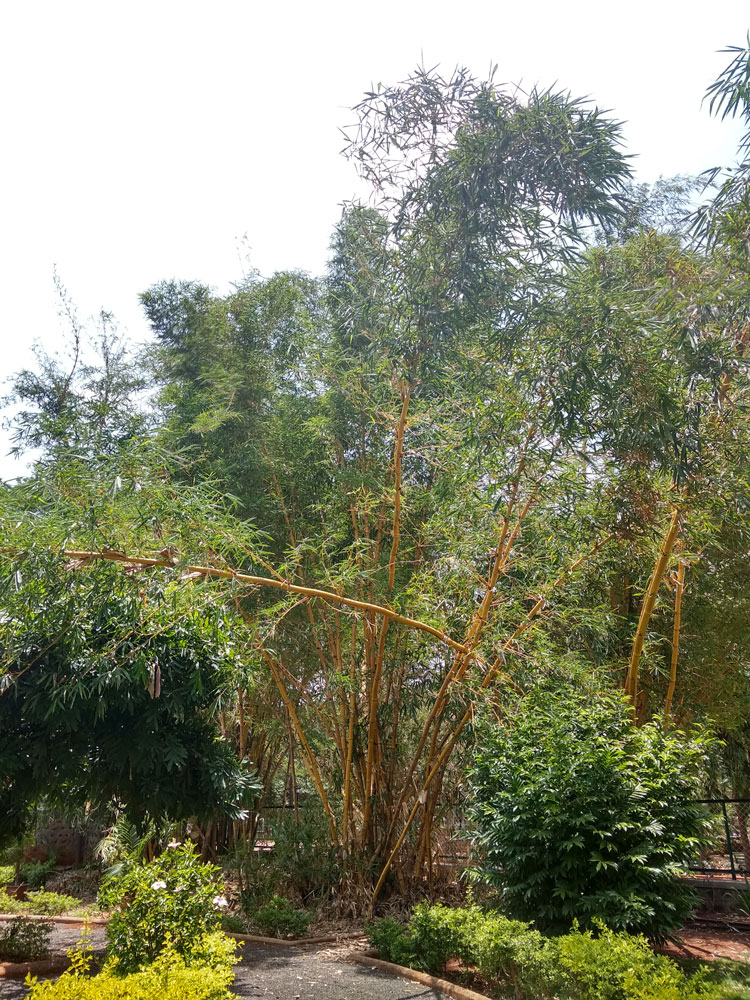Bidiru - Bamboo

Bambusa vulgaris
Summary
Scientific Classification
Kingdom: Plantae
Division: Magnoliophyta
Class: Liliopsida
Order: Poales
Family: Poaceae
Genus: Bambusa
Species: B.vulgaris
Scientific Name: Bambusa vulgaris Schrad. ex J.C.Wendl.
Common Names:
English: Common bamboo.
Hindi: Bans.
Kannada: Bidiru.
Description:
- Habit and Habitat: A tall, handsome bamboo, unarmed grass. Terrestrial habitat, cultivated. Stem polished, bright green or yellow or mixture of two, striped.
- Distribution: Native to Indochina and to the province of Yunnan in southern China. Cultivated in East, Southeast, and South Asia as well as tropical Africa. Highly concentrated in Indo-Malayan rainforests, Brazil, Pakisthan, Tanzania and India.
- Morphology:
Leaf: Linear-lanceolate, petiolate, elliptic oblong or obovate-oblong, glaucous green, pubescen 6-8 nerved, pointed with twisted tips, leaf sheaths striate, slightly hairy, ligule short, ciliate.
Infloroscence: Spikelet, compound spike.
Flower: Panicles large, leafy, spikelets in bracteates clusters of 3-10. Involucral glumes 1-2, ovate, acute, empty floral glumes, 6-10. Larger than one, imperfect flower above.
Androceium: Stamens 6.
Gynoceium: Style long, hairy, stigmas 3, plumose.
Fruit: No fruits. Low pollen viability due to irregular meiosis, one of the reason for absence of fruiting. - Propagation: Seed, Rhizome (storage organ), clump division, stem and branch cutting, layering and marcotting.
- Importance:
Used as an ornamental plant. Immature root tips are eaten as vegetable. The leaves are used to treat diarrhoea or parasites in dogs. Bamboo clumps used to make fences, huts, boats, furniture and paper. Split stems are used to make brooms, baskets and instruments. Stems used as fuel and the leaves used as fodder. - Location: Botanical garden, Anant Manohar garden.
 Trees of GSS Project supported by Makerspace Belgaum Website concept and designe by
Trees of GSS Project supported by Makerspace Belgaum Website concept and designe by